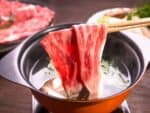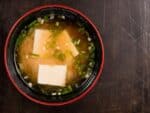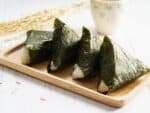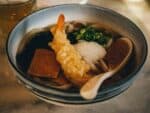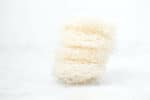Cotton Cheesecake or Japanese cheesecake as it’s also known is a delicious dessert. It’s not the easiest thing in the world to make but it’s definitely worth attempting.
So can Japanese cheesecake be frozen? Yes, Japanese Cheesecake can be frozen. Japanese Cheesecake can be stored in the freezer for up to three months. Wrap the Japanese Cheesecake securely with cling film and then wrap an additional layer of foil over the top before you freeze it.
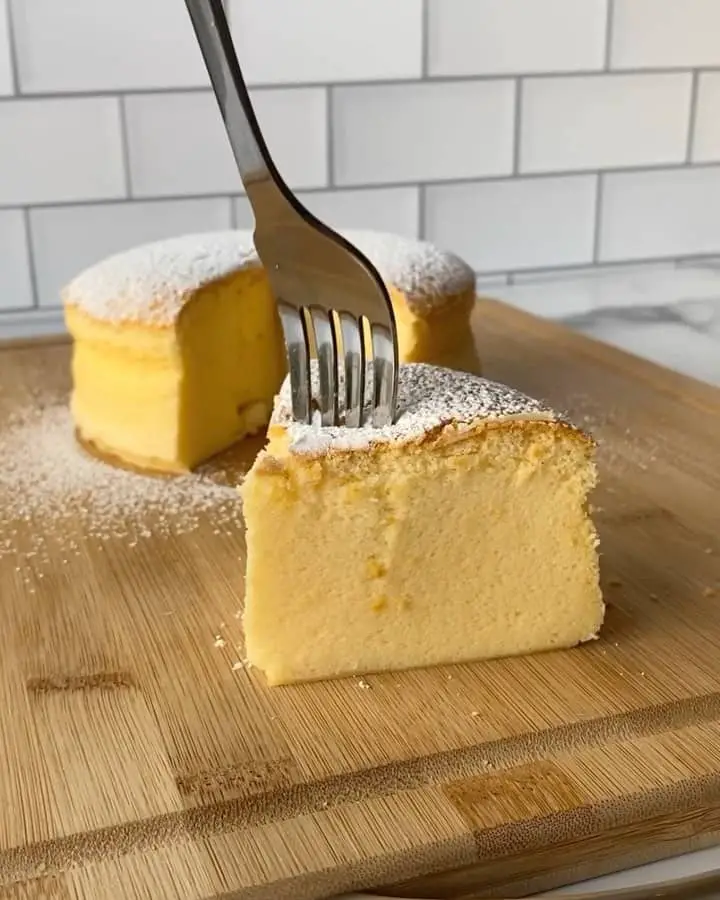

The cheesecake can also be kept in the refrigerator as an alternative to the freezer.
You’ll probably want to tuck into the cheesecake straight away but after cooking it will need to rest in the fridge for a few hours before eating. If you can show patience during this time, then putting it away in the freezer might not be a challenge. When you defrost your cheesecake, you’ll want to do so in the refrigerator until you’re ready to eat it.
How To Properly Store Japanese Cheesecake
When making a dessert as delicious as Japanese cheesecake, you need to take care to store it properly. The same goes for buying a premade Japanese Cheesecake. The ingredients used in the cheesecake can turn quickly so it’s best to be prepared on how to store it.
The most famous bakery that makes Japanese cheesecake is Uncle Tetsu’s Cheesecake which was founded in Hakata, Fukuoka in Japan. The brand has now developed to include over 70 shops all across the world. They recommend that any of their Japanese cheesecakes can be stored at room temperature for up to 12 hours.
Although room temperature is the least preferred way to store your Japanese cheesecake. If you can, you should put your cheesecake in the refrigerator until it is ready to be served. Refrigerating Cotton Cheesecake is recommended as the cold air helps to improve the flavor and texture of the dessert.
If you can try and get the cheesecake in the fridge around 4 hours before you plan to eat it, to give it the optimal flavor profile. This also applies to Japanese Cheesecake that you have made from scratch. Try and get it in the fridge for 4 hours before you are going to eat it. If you’ve gone through all that effort to make it, you might as well make it taste the best it can.
If you aren’t going to be eating the Japanese cheesecake that day then you can store it in the refrigerator for up to one week before it will turn. The cold air will help to maintain the flavor and texture of the dessert, but after one week the ingredients will start to turn. So it’s best to try and eat it before a week is up, if not you can put it in the freezer.
It’s absolutely fine to freeze Japanese cheesecake, in fact, it will last in the freezer for up to 3 months. So if you’re making this in advance you can plan accordingly. After 3 months the quality will start to degrade and you might want to consider baking another one. It’s easy to store in the freezer, just wrap it in cling film and tin foil.
Be sure not to put anything on top of it as the cheesecake will be quite delicate and can easily be squashed. However, if it’s stored properly it should come out looking as good as the day you froze it.
How To Properly Serve Japanese Cheesecake?
It’s quite common to eat Japanese Cheesecake cold, but it actually differs from other kinds of cheesecake and can also be served warm. Some people might decide to serve it straight out of the oven, while it’s still piping hot. Others might chill it in the fridge and then reheat it later, any way you like it is absolutely fine.
How you serve your Cotton Cheesecake can change what it tastes like. If you serve it cold then the cheesecake will have a stronger vanilla taste, with a more noticeable cream cheese flavor. By serving your cheesecake hot, the taste of the eggs will overtake the flavors of the cream cheese.
It all depends on what you want to do. Either way is a perfectly acceptable way to try this delectable dessert. If you have enough, you could even serve part of it hot, then cool down the rest in the fridge and have it cold some other day. Don’t wait too long though, as it will only keep for one week in the refrigerator!
What you serve with your Japanese Cheesecake can vary depending on what you fancy. Fruit is perfectly paired with this kind of cheesecake. Summer berries in particular like blueberries, strawberries, raspberries; it all works wonderfully. Top the cheesecake with powdered sugar to create a dazzling effect.
This will work whether you have your cheesecake hot or cold, you could also have it with a fruit compote. Drizzling it over the top of your slice of heavenly cheesecake. Other popular companions to Japanese Cheesecake include honey, caramel or even a little cream poured over the top.
How To Tell if the Japanese Cheesecake Has Turned?
It’s unthinkable that someone could leave their Cotton Cheesecake so long that it goes off, but these things do happen. If you’re unsure about the quality of your cheesecake then there are a few things to look out for. Since the cheesecake is made out of various dairy items and eggs, it can give you quite the stomach ache if you eat it spoiled.
The first things to look out for are any visible signs, if the cheesecake is looking dried or cracked then it may have turned. If the color of the cheesecake has changed that could be a sign that it’s no longer edible. The most notable thing will be if mold has started to grow. If it has, chuck it in the bin immediately.
If your cheesecake is beginning to ooze, or it doesn’t smell right, don’t risk it. If something doesn’t feel right about the cheesecake and you’re worried about the length of time it’s been left, play it safe and discard it.
There can be serious consequences to eating spoiled cheesecake as potentially dangerous bacteria can grow. Salmonella and listeria can thrive in this kind of environment, but they don’t have any telltale signs. There’s no smell, you can’t see them, and you won’t be able to taste them either, you’ll just end up becoming very sick.
It’s not worth risking if you think your cheesecake might have gone off. If you’re unsure then the safe bet is to bin it and have something else. As delicious as Japanese Cheesecake is, it’s not worth making yourself sick. Not least because Salmonella and listeria can have serious consequences if ingested.
What’s the Difference Between Japanese Cheesecake and Regular Cheesecake?
Japanese Cheesecakes are actually a little bit better for you than normal cheesecakes. They’re still an indulgence, but one you can be more forgiving with yourself for. Recipes for Japanese Cheesecakes call for a lot less sugar to be used, great for people counting calories or trying to limit sugar intake.
Likewise, the amount of cheese that’s used in Japanese Cheesecake is lower than that called for in regular cheesecake. While many of the ingredients are the same, the core amount used differs between the two kinds of recipes. With regular cheesecake, it’s usually served on a biscuit base but Japanese Cheesecake is not served on a base at all.
Aside from the taste, there are other differences to note as well. The Japanese Cheesecake is much softer and lighter than other kinds of cheesecakes due to the effect created by the beaten egg weights. Japanese Cheesecake is very moist, airy, and is fluffy like a sponge cake.
Regular cheesecake is much more dense and usually has a biscuit base to accompany it. The Japanese Cheesecake has a melt in your mouth texture, it feels like eating a fluffy cloud. The two kinds of cheesecake could not be more apart when it comes to taste.
Normally regular cheesecake is only served cold. While there’s nothing stopping someone from warming it up, it would be an unusual thing to do. However, with Japanese Cheesecake, it is perfectly normal to be served hot or cold. So Japanese Cheesecake has more options available for consumers.
Can You Refreeze Japanese Cheesecake?
You can refreeze Japanese Cheesecake if you need to. Plans can change so if you find yourself in a spot of bother, Japanese Cheesecake can be safely stored. Although, if your cheesecake has been out at room temperature for more than a couple of hours then it might be best to throw it away. If it’s been in the refrigerator for a few days then it can be safely refrozen with nothing to worry about.
Don’t bother trying to refreeze your cheesecake if it has already started to show signs of spoiling. Freezing may slow the growth of bacteria, it does not destroy it so err on the side of caution and throw it away. If your cheesecake is still good be sure to rewrap it in cling film and tin foil to prevent it from drying out.
One thing to be wary of if you do decide to refreeze your Japanese Cheesecake : ice crystals will start to form inside of the cheesecake. This is because the cheesecake will now contain moisture which will turn into ice crystals when frozen. It’s not the end of the world. Your cheesecake will still be edible, it just won’t top quality.
That’s because when you take your Cotton Cheesecake out of the freezer to defrost, the ice crystals will melt, causing parts of the cheesecake to become soggy in some places and dry in others. It will stop the cheesecake from being as light and fluffy as it was before the refreezing process.
Subsequent refreezing will only make the problem worse, so it’s best to try and limit the amount of times you refreeze the cheesecake. If you refreeze again then the ice crystal will form but will become larger with each refreeze.
One solution to this problem is to cut the cheesecake into individual slices and store them separately. By wrapping each individual slice of Japanese Cheesecake in cling film and tin foil, you can keep each slice separate. Then you can just take out the pieces you intend to use and defrost them in the fridge in time for dinner.
Conclusion
Japanese Cheesecake is something that can be stored in a couple of different ways. It’s best stored in either the refrigerator or the freezer, depending on how long you need to keep it for. Cotton Cheesecake is not something that should be kept at room temperature for too long, as that’s a surefire way to make it turn bad.
Refreeze the cheesecake only if you absolutely have to, while the act of refreezing will be harmless from a safety perspective there will be a sacrifice in quality. The best way to minimize the chance of refreezing is to store the cheesecake in slices rather than as a whole. Remember, any cheesecake that goes in the freezer should be on the top. If something goes on top of it then you risk flattening it.
How you serve your Japanese Cheesecake depends on what you think you might like, but it’s worth experimenting with it. Try some of it hot and some of it cold, see which flavor profile better suits your tastes. Be adventurous with what you serve it, as typically Japanese cheesecake is made with vanilla, but it doesn’t have to just be that.
Make it your own. Regardless of whether you make it yourself or it’s store-bought, what you top it with is completely at your discretion. If you like chocolate, drizzle it on top, or perhaps you prefer a fruity cheesecake. Serve with fresh fruit or with a compote, whatever takes your fancy, just enjoy this light, fluffy, melt in your mouth dessert.
